Tomm Gai Kha Onn is a soup if served on its own or a meal with a side of rice. A slightly thicker version than Tom Kha Gai, it is traditionally made with bone-in pieces of chicken cooked in a Thai coconut broth flavored with galangal, lemongrass, bai makrut, cilantro roots, bird’s eye chiles, lime juice and fish sauce.
This is an easy recipe, but you need to do quite a bit of shopping and some items might be hard to find (depending on where you live). I will go over some of the ingredients and provide suitable substitutions. Most items can be found in South East Asian markets, Indian groceries, Latin tiendas or your local farmer’s market.
Galangal (pronounced guh-lang-guh) is a sand and pink colored herbaceous plant with peppery earthy citrusy flavors. Best if used fresh; simply scrape off top layer of a young root, slice thinly and soak in lime water to prevent discoloration. Galangal paste would be my first choice as a substitute. You can also find the roots frozen or dried slivers packaged in small plastic bags or sold in slices packed in brine in glass jars. Galangal powder can be found in your supermarket aisle; although frowned upon by Thai food purists, it will do when nothing else is available.
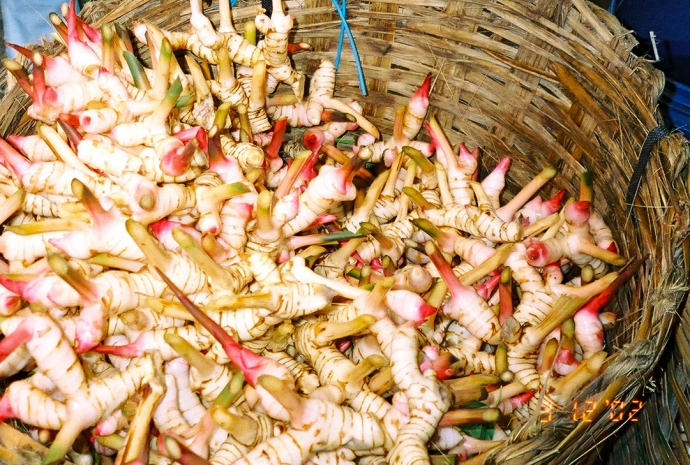 photo © Clio7 on flickr
photo © Clio7 on flickr
Lemongrass has a floral citrusy aroma. Fresh lemongrass is readily available in Asian markets so are frozen stalks, which are a good substitute. I do not recommend using dried pieces (they look like cardboard and taste like medicine), but if need to, soak in hot water before use. Lemongrass powder (known as sereh powder) should be your last choice; use one teaspoon powder for each stalk. Other suitable substitutions include lemon verbena, lemon balm or lemon zest.
photo © beautifulcataya on flickr
Bai Makrut (Kaffir Lime Leaves) is available fresh, frozen, preserved in jars, dried or in powder form. Bruise or tear fresh leaves before use to release oils. Dried leaves are milder in flavor, so use twice as much. You can substitute one tablespoon lemon or lime zest for every 6 leaves.
Have you ever thought of growing your own kaffir lime tree? Since the tree grows to only about five feet, it can be planted in containers; just provide well drained soil, full sun and mist (it thrives in humid conditions).
photo © agrumes-baches.com
Coriander root is the root of a cilantro plant with about half an inch of green stem; with a more intense flavor than leaves. I am so tempted to say that this would be the hardest ingredient to find, but I won’t. Since coriander root is used in Mexican cooking it can be found in Latin groceries as well as your local farmer’s market. If all fails, a handful of coriander seeds with a bunch of cilantro stalks will do as substitute … or simply grow your own and freeze for later use.
To grow your own coriander roots: use a planting container with good drainage that is at least 10 inches deep and fill it three-fourths with good soil. Soak coriander seeds in water for a day or two to soften the outer shells then spread on top of prepared soil; place under partial sun. You will start to see growth in about three days. It takes 30-60 days for roots to mature; depending on soil condition, watering, seed quality and so forth. Once the largest stem of a plant reaches just under a quarter of an inch in diameter the roots underneath are ready for harvest. Gently pull up roots and cut off leaving half an inch of stem. You should have between 3-to-4 inches of root. Just soak in water to remove excess dirt, wash thoroughly under running water and blot dry. They are now ready for use; or roll between freezer paper and freeze in freezer bags.
photo © Scissors015 on flickr
Now, for the recipe: prep your ingredients and follow steps as instructed below. There’s really not much to it.
There you have it folks,
Tomm Gai Kha Onn ready to be served,
TOMM GAI KHA ONN | THAI COCONUT CHICKEN SOUP
print this recipe
2 ½ cups coconut milk
2 cups Chinese chicken stock
2-to-3 cups water
1 teaspoon brown, palm or coconut sugar; optional
2-to-3 stalks lemongrass; bruised by bending or pounding, cut into 3” pieces
6 coriander roots (with stems); or ¼-to-½ cup coriander seeds and some cilantro sprigs with leaves
4 red shallots; two halved, two minced
5 red jalapeno peppers, or 15 Thai bird’s eye chiles, or 10 serrano chiles; lightly pounded
1 ½” piece young galangal root, top layer removed, sliced; or 1-to-1 ½ teaspoons galangal paste
6 bai makrut (kaffir lime leaves), bruised; or peel of 2 limes, scored with knife to release oils
16-to-24 oz chicken breast tenderloin, cubed
15 oz fresh shitake or canned straw or oyster mushrooms
1 ¼ cups canned bamboo shoots
1 ½ cups coconut cream
1-to-3 tablespoons fish sauce (Namm Pla)
2-to-3 limes, juice of
¼ cup fresh cilantro leaves
¼-to-1 teaspoon roasted chili paste (Namm Prik Phao); optional
Pinch of sea salt, if needed
Garnish: chives, sliced chiles, cilantro, basil, halved grape tomatoes, cooked cellophane noodles
Combine first 10 ingredients in a large saucepan and bring to a gentle boil over medium heat. Reduce heat to low, cover and simmer 40-to-60 minutes. Strain through a fine mesh sieve, return broth to saucepan with some of the ingredients like chiles, bai makrut leaves and lemongrass if desired.
Add next five ingredients to saucepan. Simmer uncovered on medium-low heat 20-to-40 minutes until chicken is cooked thoroughly.
Add next four ingredients; adjust flavors as needed. Serve into individual soup bowls and garnish as desired.



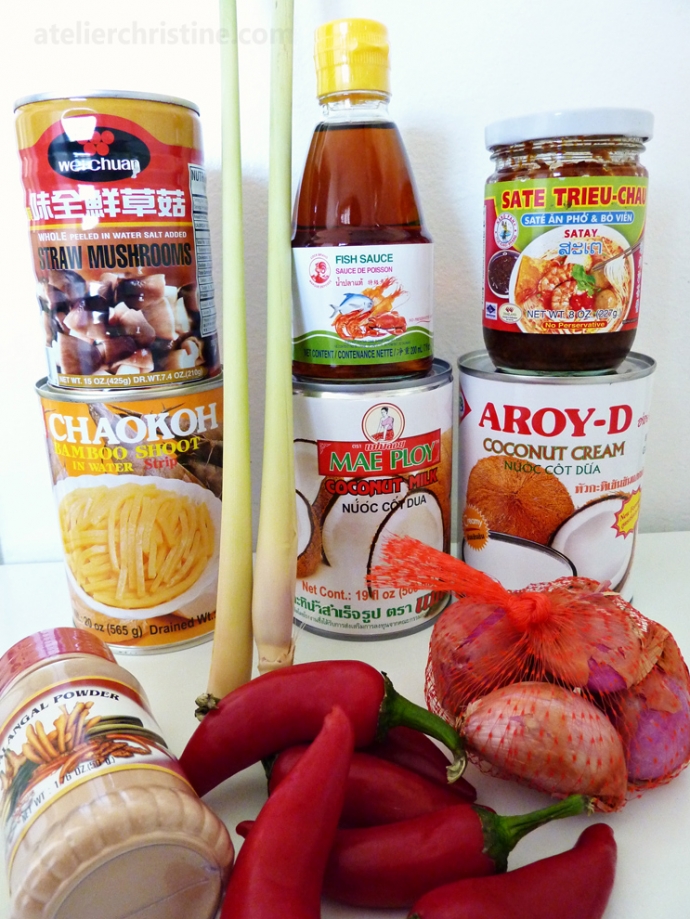
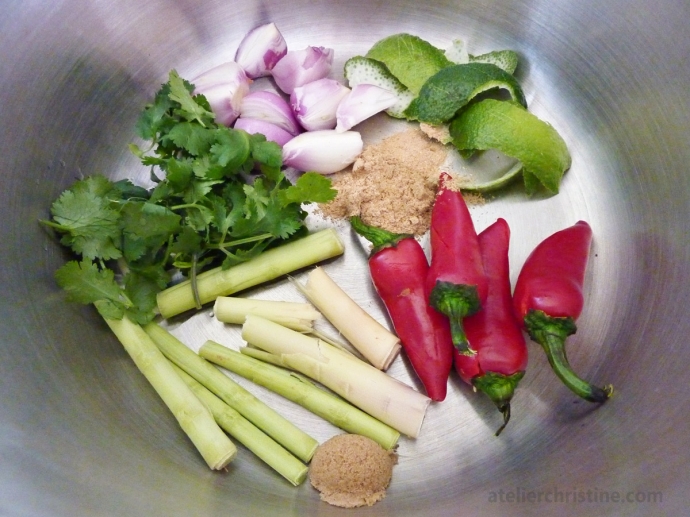


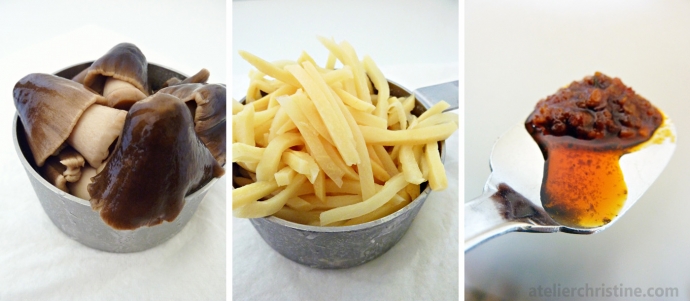
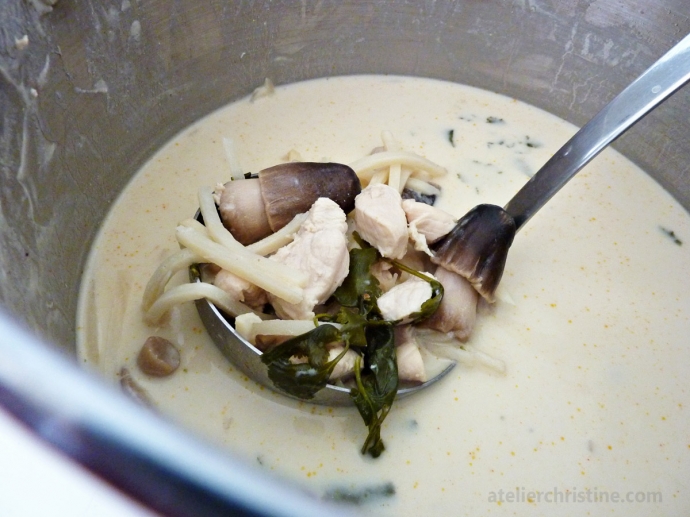
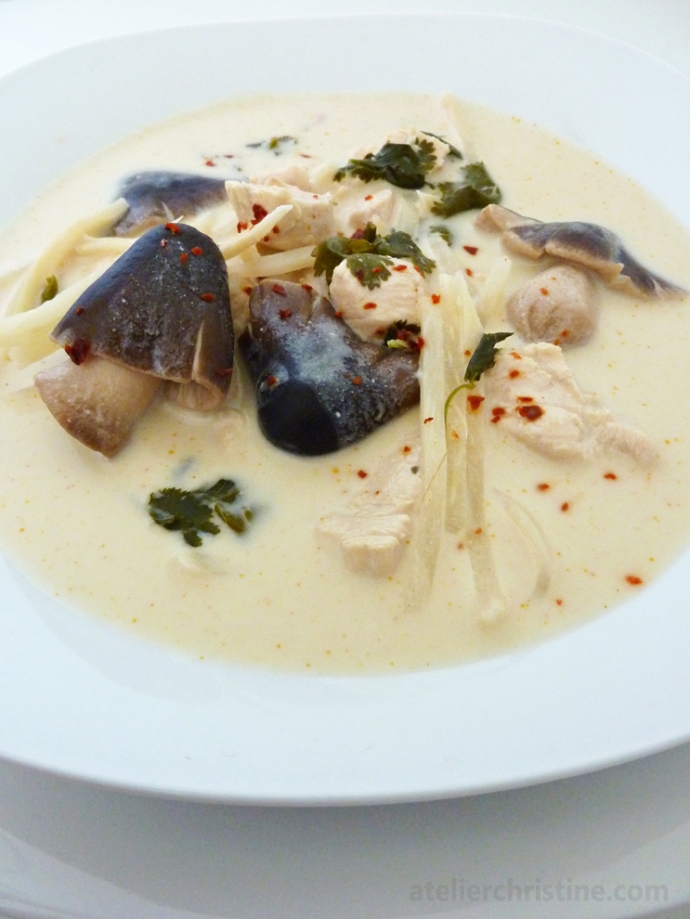
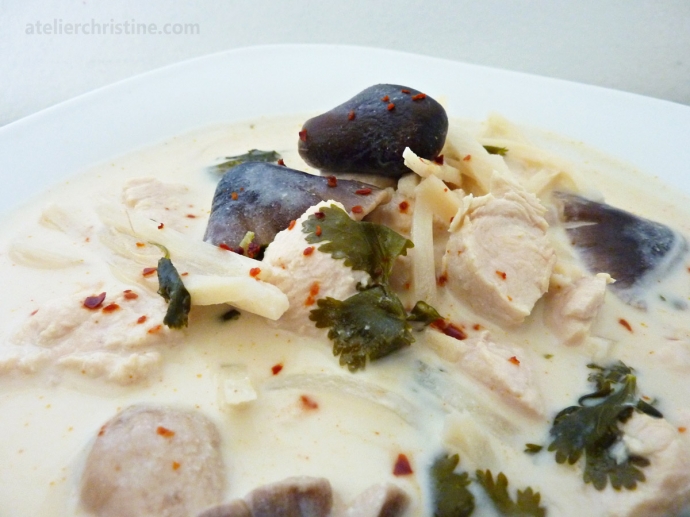





Recent Comments